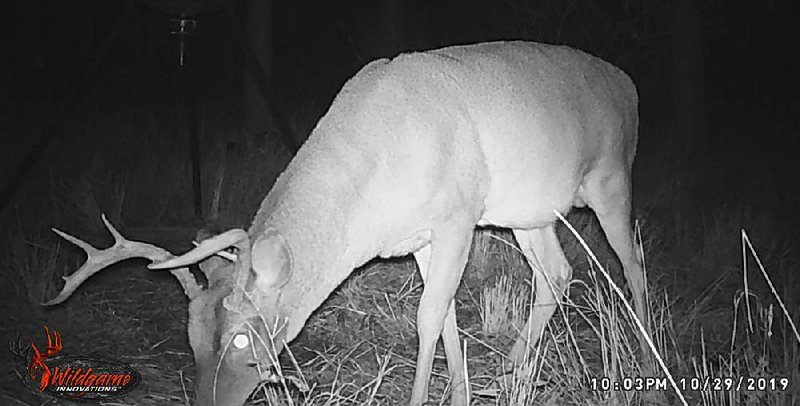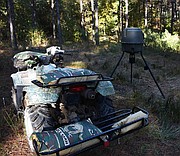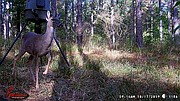Where I hunt, we wouldn't see many deer if we didn't bait and feed supplementally.
The Old Belfast Hunting Club leases about 4,400 acres of industrial pine forest. We have just enough members to pay a reasonable annual fee while providing enough room for each member to have three stands.
Like many leased-land clubs in the Gulf Coastal Plain, much of our acreage is covered with thick, even-age young thickets. They're impenetrable, which concentrates our members in and around huntable habitat while maintaining a club-mandated 300 yards between stands for safety.
There is nothing for wildlife to eat in the young thickets, and scant little for wildlife to eat in the mature thickets until they are thinned. Thinning the timber provides some forage for seven to 10 years before the remaining timber is clear cut, beginning the cycle anew.
Without baiting, feeding and planting woodland food plots, deer would be limited to foraging for acorns in the streamside management zones. These wafer-thin ribbons among the pines contain the only hardwoods in the country.
Baiting and feeding does not concentrate deer, but it momentarily stops concentrations of deer as they travel through the woods.
For example, I have three remote cameras at three locations where I hunt. One overlooks a scrape, which is kind of like a Tinder site for deer. It shoots a couple of photos a day of a doe that visits the scrape. Every few days, it photographs a buck around 7:30 p.m. Without baiting, hunters would be limited to hunting scrapes, rubs and game trails.
Another camera is beside a mechanical feeder about 70 yards uphill from a long-established stand in a streamside management zone.
The third is next to a feeder about 170 yards from a stand in a thinned pine stand. From 3:12 p.m on Oct. 14 to Oct. 31 at 7:41 a.m., that camera captured nearly 3,000 images. Since movement triggers the sensor, they are largely clusters of photos of the same deer taken over 15-20 minute spans.
I buy my corn from the Farmers Association cooperative, and I inspect it before putting it inside a feeder. The corn is always dry and mold free. The two feeders distribute corn mechanically for five seconds in the morning and for five seconds in the early evening. Most photographs are shot from 7:30 p.m. to about 6 a.m.
Five is the largest number of deer that appear in any photograph, but rarely are there that many. Most photos show a doe and two yearlings. One 4-point buck appears regularly. A mature 5x2 buck appears about once a week, always at the same time late at night. A 2x2 that appears to be 2-3 years old appears somewhat regularly. A group of corpulent raccoons appears regularly, as well, often at the same time as the deer.
These are not unhealthy or prolonged concentrations of wildlife. For hunting purposes, neither is it a particularly efficient concentration of wildlife, but it is better than what I would have without baiting.
There is an art to attracting wildlife, even when baiting. First, a feeder or feeding station must be near escape cover. Andrea Russenberger, a biologist for the Arkansas Game and Fish Commission, said that deer more frequently visit her unmotorized gravity feeders during daylight hours. That's probably because feed is always available at a gravity feeder. When a limited amount of feed is cleaned up around a motorized feeder, deer habituate to it on a more rigid timetable.
Feeding is a step up from baiting and involves better quality feed. One popular method is to use covered troughs or bins. The roof does a fairly good job of keeping rain off the feed. Feeding in this manner involves a significant investment because high-quality deer feed is expensive, and deer will eat all you give them. It provides essential nutrients and minerals to promote antler growth, and also to help nursing does regain physical health during the fawning season.
The downside is that multiple deer contact feed in this way, which can facilitate disease transmission. The same is true for gravity deer feeders. Mechanical feeders spray feed and disperse feeding activity.
Thinned pine stands provide ample opportunities to create food plots in the openings between the pine rows. You have to wait a few years for the pine stumps to rot away to avoid damaging your disc, and you have to choose rows that receive the most sunlight. These are excellent for growing winter wheat, oats, corn, clovers, rape, chicory, chufa, peas, turnips and other brassicas that provide good forage for deer.
Before planting, collect a soil sample and have it tested by your county extension. Gather samples from multiple sites to get an accurate representation. Test results will tell you how much lime you need to add to your soil and the optimum fertilizer formulation.
If you want to skip that step, just apply a lot of lime and use 13-13-13 fertilizer. In piney woods, you can't lime too much. I plant in late summer to prevent summer drought from burning up my plots. By early October, my plots are green and lush.
I cultivate small woodland plots with a four-wheeler and a pull-behind disc. I've had best results with an ATV disc from Tractor Supply Company, but I've done well with a GroundHog Maxx, too. This requires a four-wheeler with at least a 400cc engine. Planting big plots efficiently requires a tractor.
Food plots encourage a more natural style of feeding behavior and allow you to provide an organic diversity of food.
Sports on 11/03/2019


